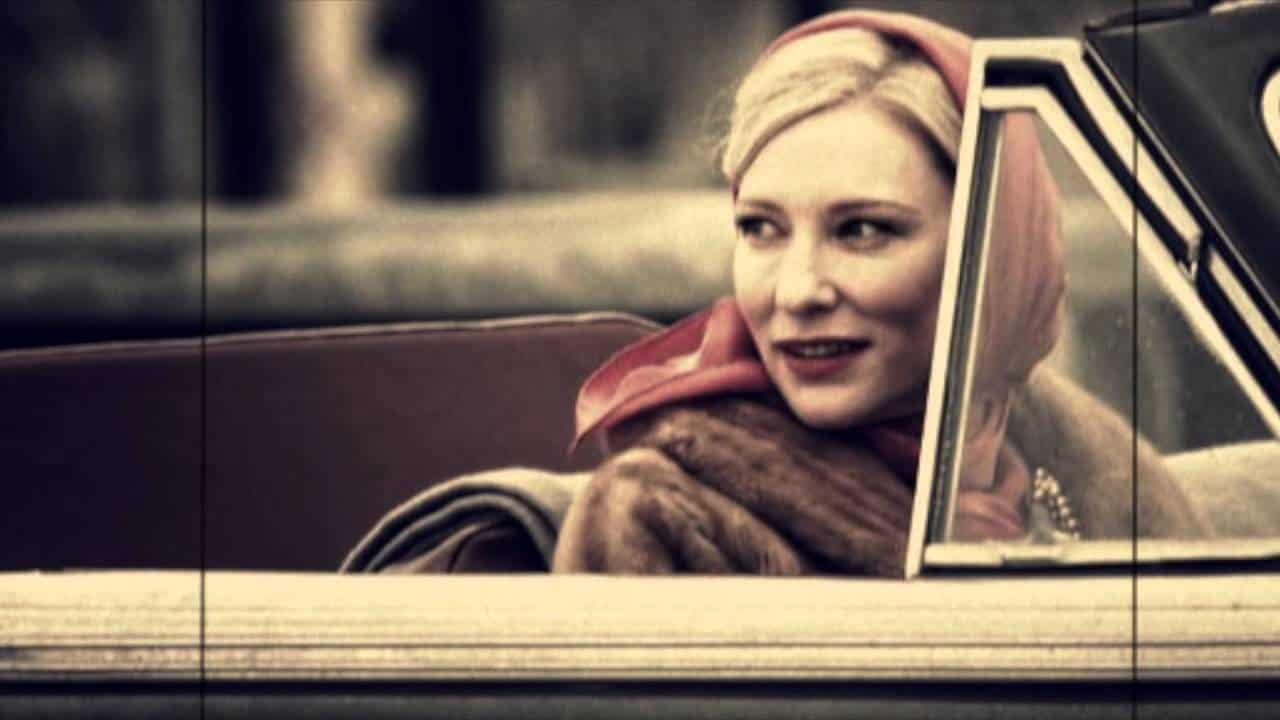Art is a matter of aesthetics.
“Aesthetics,” whether it’s regarding paintings, film, theatre, the written word, and so on, is often regarded as secondary, cursory to the real meat of the art. But “aesthetic” goes beyond the surface; it’s not just in reference to beauty. “Aesthetic” is the entire underpinning of a piece of art. It is the beauty, the meaning, the depth of the piece, the parts that come together to elevate an artwork into what the Romantics referred to as the sublime.
Carol is one of those special films that only comes along once every few years. It is a stunning film of extraordinary beauty and depth which explores the powerful, sometimes even transcendent, nature of human connection.
Much of Carol revolves around societal norms and how they influence behavior, relationships, and how we connect with each other. It’s the early ’50s. Therese Belivet (Rooney Mara) is a young woman working the counter at a department store. Her life is fairly mundane; she comes into work, leaves, goes out with her friend group, and is being courted by Richard (Jake Lacy). One day, a customer comes up to Therese. She doesn’t know who she is, but noticed her as soon as she walked in the door. This customer is Carol (Cate Blanchett), who asks Therese about a Christmas present for her daughter. It’s obvious they have some sort of immediate connection. Carol settles on a present and departs, leaving her gloves on the counter. Therese looks up her address and sends them back to Carol.
This gives Carol the opportunity to take Therese out to lunch, where they get to know each other a little bit. They become fast friends, and their relationship quickly develops. This, however, doesn’t sit entirely well with Carol’s husband Harge (Kyle Chandler), with whom she is currently in the process of divorcing. Suspecting a sexual relationship between the two women (as Carol was involved with a woman before), Harge becomes suspicious, using his hunch as fodder against his wife in the custody battle of their child.
Every aspect of Carol is as close to perfection as a film can be. It all starts with the script, which in this case happens to be a beautiful piece of writing by Phyllis Nagy, adapted from Patricia Highsmith’s novel The Price of Salt (later released as Carol). Nagy’s screenplay thoughtfully explores each of the relationships in the film. The material presents many opportunities for veering into stereotypes, and perhaps a lessor writer would have taken these easy roads of character suggestion, leaving the actors and the audience with two-dimensional characters and nothing to work for. Instead, each character, even those without much screen time, have endless layers and subtleties.
A great screenplay means nothing, however, without great acting to go along with it. Luckily for us, Carol features a cast full of powerhouse performances. The actors seem to fill every crevice of their characters, falling into them as naturally as if they had lived their whole lives as Therese, Carol, Harge, or whomever. While in some films the characters seem like just that, characters in a movie, the acting and the writing meld together perfectly to create a film full of humans.
Carol is visually beautiful in an understated way, finding the complexity and elegance inherent in the world around us in a way that almost Wordsworthian. (Special props to the visual team and cinematographer Edward Lachman.) The visual language of the film is very subtle, using careful framing to suggest the inner lives of the characters without beating us over the head with it.
Director Todd Haynes, along with his cast and crew, have made a cinematic achievement with Carol. It is a film of great beauty and profound emotional depth, one of the best films of the year that will hopefully be remembered for a long time to come.
The film hits theaters this Friday.
